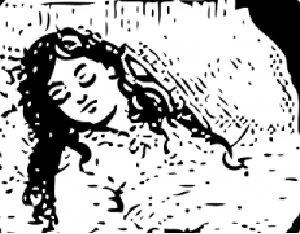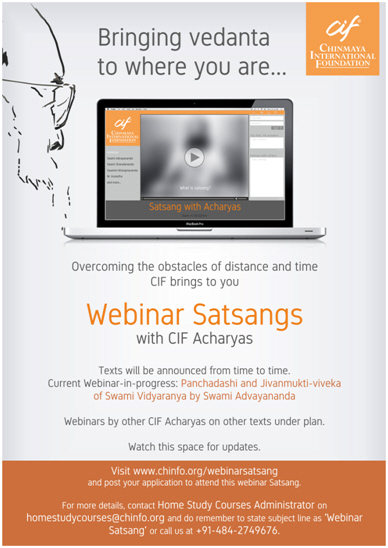
This is just to notify readers that (the first part of) a two-part article by myself on this topic has just been published on the ‘Stillness Speaks‘ site. (The second part will be published later this week.)


This is just to notify readers that (the first part of) a two-part article by myself on this topic has just been published on the ‘Stillness Speaks‘ site. (The second part will be published later this week.)
 Four years, four weeks and a fortnight ago exactly to this day, we discussed Deep sleep in these columns.
Four years, four weeks and a fortnight ago exactly to this day, we discussed Deep sleep in these columns.
As we know, the traditional Vedanta (TV) following mANDUkya upanishad and Gaudapada’s kAkrikA, considers Deep sleep as one of the three states that plays on the substratum of turIya (the Fourth). Even amongst the TV people, there are schools that hold that prAjnya is no different from turIya. Swami Ishwarananda of RK Mission, Kerala produced a short monograph expounding this theory supported by Upanishadic quotes. I presented those arguments in a three part series of posts here, here and here. The followers of Swami Satchidanandendra Saraswati of Holenarsapur too support this contention.
Atmananda Krishna Menon (1883 – 1959) who propagated the “Direct Path” (DP) approach of Self-Inquiry too taught that Deep sleep itself was Pure Consciousness knowing Itself as Itself. The actual experience of Consciousness experiencing Itself in Deep sleep cannot be known or conceptualized by the awake state mind.
The Consciousness knows Itself by being Itself and another name for that is Happiness. Happiness here does not mean any state of excitement or arousal. It is simply the absence of ‘unhappiness.’ In other words there exists during Deep sleep neither a sense of lack nor any desire. It is not a state triggered by or obtained through the contact of the sensory systems. It is acausal. Continue reading

I have just received notification of the webinars which are being run by Chinmaya International Foundation. These are conducted on-line with audio and video content, covering both introductory and advanced texts – an opportunity to study with a traditional teacher when you do not have physical access to one! They are for serious students and feature Q & A sessions (in both directions!). Sounds excellent!
Here are brief details of current courses:

For more details about the courses and how to apply, look at their website.
If any visitor to this site takes up the offer, I would be interested in hearing back from them as to how they get on.

If you click on ‘About’ in the menu bar at the top of the page, you will be taken to the page that lists the aims of this blog and the associated website at www.advaita.org.uk. This page was written by Peter Bonnici (with assistance from Ramesam), with whom I initiated Advaita Vision around 4 years ago. (As most readers will know, Peter is unfortunately no longer with us.) Despite its ease of accessibility, one wonders how many visitors actually read it. Certainly it would seem that some have never done so. Accordingly, I reproduce it below, since its content is so important.
*****************
This site provides a platform for all who are attracted to the vision of non-duality and like to share their views and their approaches.
Here’s why Advaita Vision will be an open platform for all committed to self-enquiry:
Therefore different expressions of the fundamental principle of advaita are needed to meet their specific different needs. Continue reading
VEDĀNTA the solution to our fundamental problem by D. Venugopal
Part 21 is a brillantly clear exposition of dRRig-dRRiShya- viveka – the discrimination between subject and object, in order to realize my true nature as Consciousness.
There is a complete Contents List, to which links are added as each new part appears.
VEDĀNTA the solution to our fundamental problem by D. Venugopal
Part 20 looks at the defining requirements of a good teacher and at the distinction between subject and object.
There is a complete Contents List, to which links are added as each new part appears.
VEDĀNTA the solution to our fundamental problem by D. Venugopal
Part 19 explains why a traditional teacher should be approached and briefly outlines the methods of teaching.
There is a complete Contents List, to which links are added as each new part appears.
(Under part 4 of my ‘Review of article on Shankara’ 9 ‘thoughts’ or
comments were made, the last one on May 8th, 2013. Following that,
Peter and I continued our dialogue, which took us in different
directions, resulting in a 12 page thread. We both thought that our discussion might merit publication in AV. Quite sadly, Peter passed away one week after he wrote his last reply within our exchange. This is the first part, to be followed sequentially).
Martin (M) – How interesting that myths (different from ‘mithya’) give rise to different interpretations, perhaps mostly due to one’s cultural background and held views on life, etc. When you say ‘literal’, in this context, I understand something like an interesting story, mostly for children; but if myths say something about man’s life, his struggles, aspirations, etc., how can they be just nice, imaginative stories? (‘literal’ x2 is for those who believe – in the recounting of The Garden of Paradise – that that is how it actually happened; I don’t count you among them, of course).
About your points (Peter’s (P):
b) P: “Before Adam was ‘one with’ God, (i.e. before he knew right from wrong), what was he?” My (M) answer: ‘one of us’ sounds rather sarcastic, No? Yes, man knew duality by his ‘individualistic’ act, but was not like God; this cannot be the meaning of the Hebrew Bible (Old Testament). With the New Testament, things are no longer oppressive, based on fear and ‘the law’: Jesus brings liberation through knowledge, love, and compassion, and man is seen as theomorphic (capable of assuming his divinity in Oneness). cf. St. John’s Gospel and the Gnostic Gospel of Thomas.
b) P: “what’s wrong with having the knowledge of right and wrong?”.
M: ‘Seeing’ duality everywhere*, precisely – the pairs of opposites – and thus becoming judgmental and stuck in that limited, constricted vision, the consequence being the loss of Paradise in union with God. “You will be like gods” was the promise of the serpent. Duality (plurality) pertains to the dimension of God or Ishvara (‘I’ and ‘other’, heavens, hells, etc.). Right and wrong belong to thinking (vritti/s), as you well know, and it can be a problem unless you just observe it as such (i.e., an object for Consciousness). Did the couple know that they were immortal? I don’t know, and probably they did not know either. Continue reading
 At some time or other in every person’s life the question of identity arises in some form or other. For most people, the answer seems pretty obvious: I am a unique human being, a man/woman, in this body, with these parents, these siblings, and these ideas. I am defined by my wealth, my social class, my education, my tastes, my network of contacts, my race. I am shaped by my biology, my physiology, my psychology. Anything beyond this is ‘philosophy’, and one thing I am not is a philosopher!
At some time or other in every person’s life the question of identity arises in some form or other. For most people, the answer seems pretty obvious: I am a unique human being, a man/woman, in this body, with these parents, these siblings, and these ideas. I am defined by my wealth, my social class, my education, my tastes, my network of contacts, my race. I am shaped by my biology, my physiology, my psychology. Anything beyond this is ‘philosophy’, and one thing I am not is a philosopher!
If, however, people knew the life-changing value in finding the true answer to the question, ‘Who am I?’ they might be prepared to dig a bit deeper for that truth. Vedānta gives us a very good reason to pursue the question. It says that because we do not know the truth of who we are, we take ourselves to be an amalgam of the body and mind (thus pretty much confirming the majority view). The inevitable consequence of identifying with something that is as changeable, limited and vulnerable as the body and mind, is that ‘I’ is also taken to be changeable, limited and vulnerable. And it consumes a whole life of sweat and slog in trying to build up adequate self-protection. Continue reading
Q: As you know, all spiritual traditions in Tibet, many in India and even the early Christians took reincarnation for granted.
In Advaita however the idea is blatantly refused. Balsekar says, since there is no ego and the idea of an individual person is an illusion, what or who is there to be reincarnated?
Does this mean that the other traditions are wrong or is it a question of understanding, meaning that the people who argue differently do so from a different level of understanding / consciousness? Continue reading